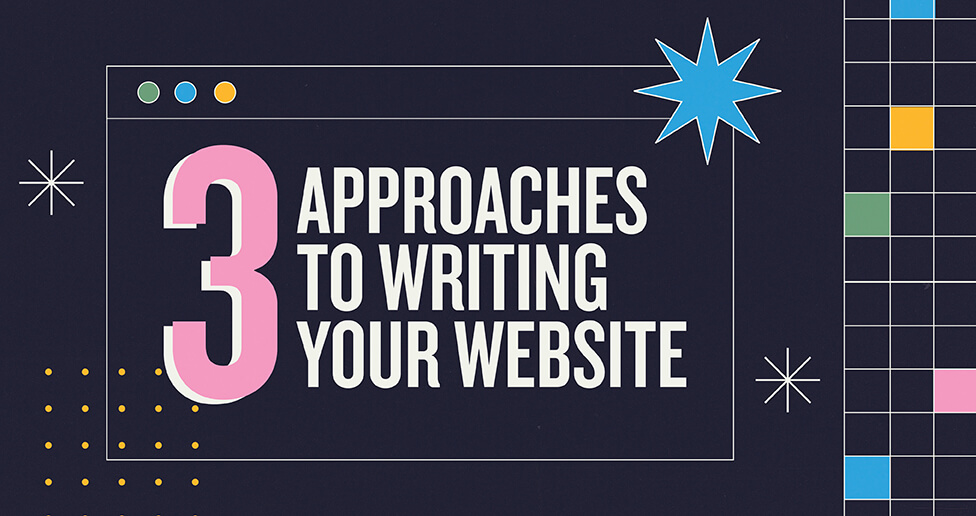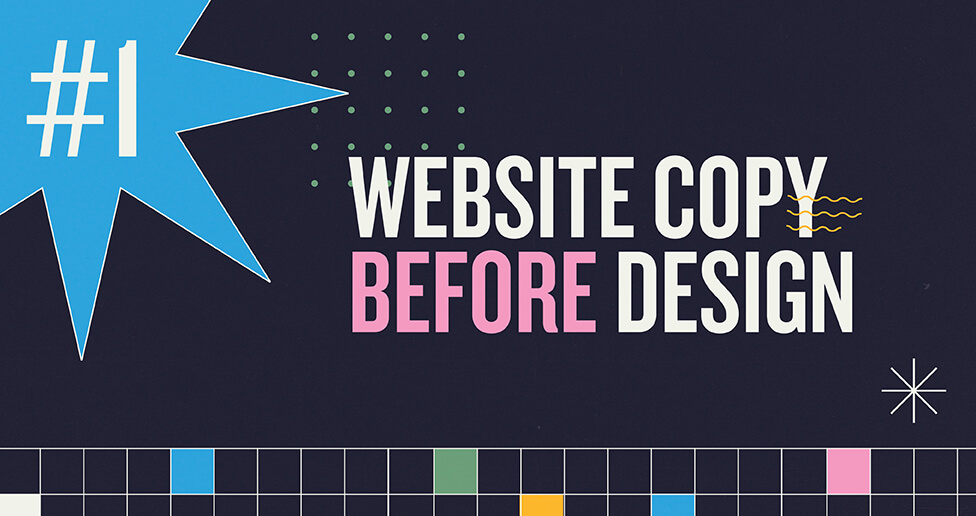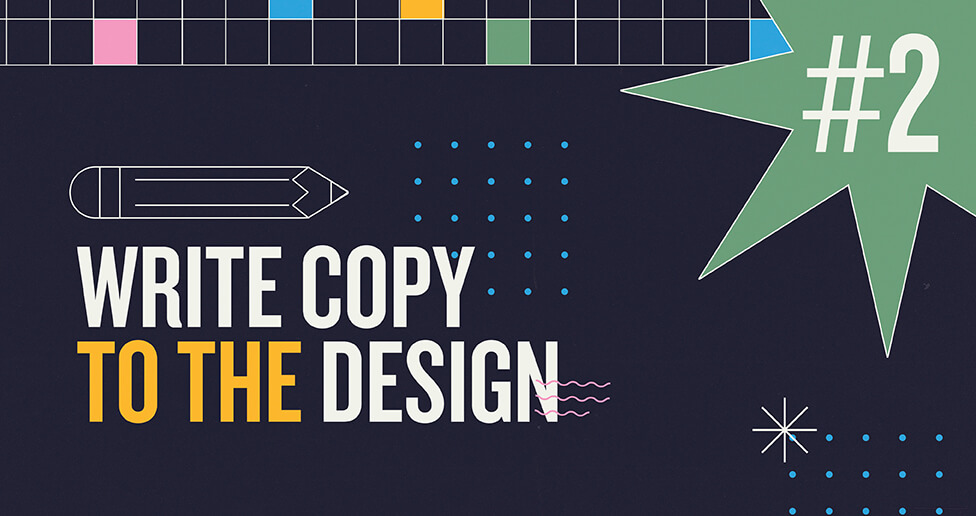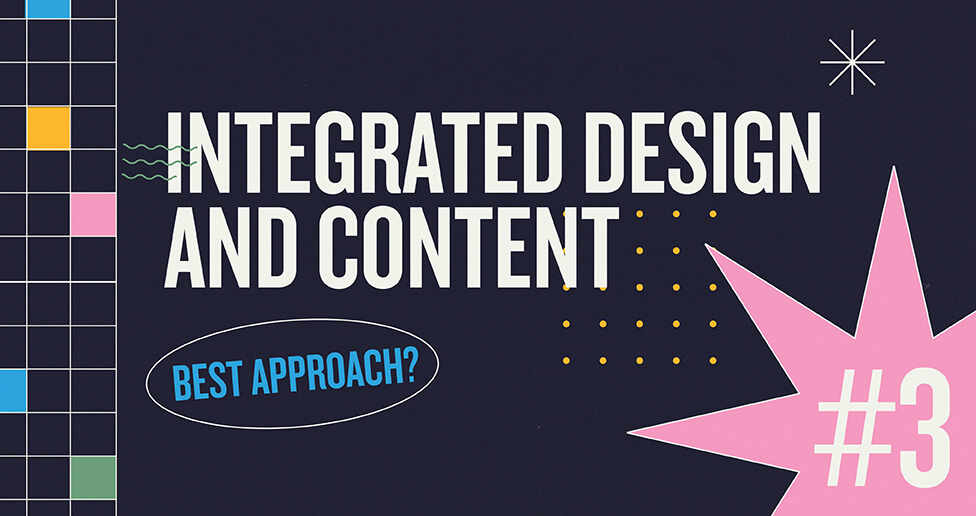
Likely, you’ve defined a strong business case for your new website by recognizing the benefits: a modern user interface, integrating new features that weren’t possible during your last rebuild, outperforming your old website on page load, search-engine optimization, increased platform security, realigning your website with your visual brand, and a more intuitive user experience.
As you consider the functionality and design of your new website, plan to spend time with your content, optimizing your website copy to shape how users perceive your brand and encourage user engagement with the site. Ideally, the new website would be designed with actual content in mind, but sometimes reality gets in the way of the ideal.
Here are three approaches to writing website copy to consider while you build your project timeline:
Website copy before design

Think of this as Plan A. This approach puts the focus on creating excellent content without being constrained by design. Your content can be shaped by what you want to communicate rather than how it will look.
With copy written in advance, the designer can more fully understand the tone of your brand and what you are communicating. When content informs page structure, elements of the site can be designed to fit content almost perfectly.
If you have dedicated content authors, they have availability during design and development to focus on specific goals like increasing accessibility of content and calls to action, testing specific copy to drive user engagement, gathering and creating assets, and tightening metadata to improve SEO and internal search. On a smaller team where content authors are serving other roles on the project, completing copywriting early frees them up to focus on their other responsibilities related to the project.
Most importantly, this approach can protect your project timeline. Project delays often occur because the content entry phase runs long. This approach allows you to focus on entering content during that phase and to rewrite content only when necessary to fit the final design.
Write copy to the design

Though beginning with website copy is ideal, writing copy after the design phase offers some benefits as well. With this approach, content authors have clear expectations for what to write, and they understand the constraints of the design. Copywriters may find it easier to reuse content consistently with this approach, increasing the efficiency of their writing.
Your design work can begin sooner without depending on copywriting. However, you’ll need to loop content authors in early and plan for increased collaboration between designers and writers. While your content author won’t encounter any surprises when trying to fit content into design, they may need to be better able to describe the ideal structure of content prior to writing it.
This approach has risks to the project timeline as authors are often waiting for development to be completed before they begin authoring pages. Plan to keep the developer team more engaged during the content authoring process as content authors are likely to discover ways that the parameters of the new components don’t quite meet their needs.
Integrated design and content

Writing website copy in tandem with designing the website requires the most extensive collaboration between content authors and designers. This approach is more time consuming than either of the other approaches, but the end product is likely to combine the benefits of those approaches.
Here, design and content evolve together. Content informs structure, but design creates constraints. By collaborating early and often, authors and designers both can influence the final design.
While this approach requires more collaboration, there are project circumstances where an integrated approach fits more naturally:
- Reusing existing content: If you’ve recently completed an audit of your existing site and updated content where necessary, content authors can work with designers to explain where the structure of the site needs enhancements. Authors can then write new content while designers create the structure for that content.
- Reusing existing design: Likewise, if you’re adding a section or landing page to an existing site where strong design standards are already established, collaboration can focus on how content could fit the structure of existing components. A developer is a helpful voice on the team as they may be able to advise on where small modifications to existing code could have a big impact.
- Headless CMS: A headless CMS decouples content from presentation. You may have a content model that already supports providing copy about products, features, or other aspects of your brand into purposeful chunks. If not, you can modify the content model and work to add copy that allows content authors to define previews, overviews, and in-depth information about the same content item. Whether you’re migrating to a headless CMS or working within one, content authors can focus on defining copy and assets and designers can work with the expectation that those pieces of content will exist to fit into the design.
Ultimately, factors like the availability of your team, ease of collaboration, and how quickly you want your website launched will impact the approach you choose.
Writing copy prior to design frees up authors to work on KPI-aligned goals for the copy during design and development and keeps authors focused on content entry with few modifications to make content fit the final design.
Writing copy conformed to design allows your design phase to start sooner and limits surprises as copywriters understand the full limitations of the design before they begin writing.
An integrated approach is likely to be more time-consuming but may be the best approach to your ongoing page creation after launch and set you up well for your next website rebuild.
Subscribe to our newsletter
Get our insights and perspectives delivered to your inbox.


